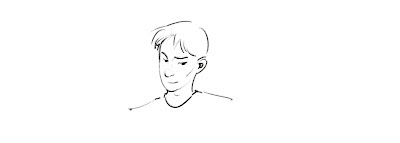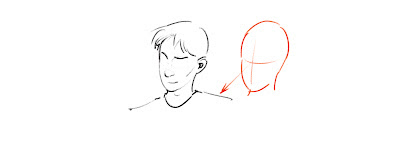Every project calls for a unique style of rendering—some simple, some very complex. The following pictures show some of the styles I've worked in over the past few years and how each ranks according to workload.
Also, I'll show some illustrations for projects that haven't yet made it to the blog! I hope you enjoy....
The sketch:
Storyboard for Jimmy Valiant: Scions of Danger - less than an hour
The sketch is a basic element of the artistic process. Every work of art starts as a sketch, and sometimes—as is the case of storyboards—it stays in sketch form and is used as inspiration for something else, such as a movie.
The monochromatic oil sketch:
Storyboard for Ace Wonder: Message from a Dead Man - less than an hour
Sometimes a project calls for something a little bit more than a sketch—a value study. Many works of art also go through the value study stage. Some stay here (though this particular piece went on to be fully rendered in the style of a fine oil painting). I usually use this rendering method to explore lighting, form, and composition. It can give a sneak preview of what the finished work will look like.
The Promotional Sketch:
Concept art for Eleventh Hour - about an hour
Often a director wants something high quality to show investors, but may not have the funds yet to film a short trailer. The promotional sketch helps fill that need by bringing the story to life in a fast and economical way.
Line and wash:
Read Everywhere - Self-Promotional Piece - a couple to a few hours
I've just developed some new digital watercolor techniques! These allow me to create simple and powerful illustrations in the styles of Carl Larsson, Jessie Wilcox Smith, Arthur Rackham, and other illustrators from the golden age of illustration. I'm really excited about the possibilities with this medium.
Realistic cartoon:
Snowball - Self-Promotional Piece - half to full day
The realistic cartoon can really pack a punch. On the surface it appears simple and sometimes funny, but that simplicity hides a deeper, more profound side. A good realistic cartoon brings a depth that other styles cannot.
Matte Painting:
Matte for Remember - 1-2 days
A matte is a very detailed landscape painting. Often a matte painter relies heavily on photographs, but good artists will paint as much or more than he uses photographs for.
This matte painting used about 10 photographs, but each photograph was touched up and painted over, with half of the picture being pure paint to tie the images seamlessly together.
Finished Oil Painting:
Illustration for Olive Baptist's 2010 Christmas program - 2-5 days
The highest form of illustration, often a lot of time goes into making all the details just right and bringing out subtleties in color and value. Most of my clients want this rendering style when approaching me for art.
Of course, none of these time estimations are exact—different projects take different amounts of work. The content of the artwork affects the time it takes to render. Here are some elements which tend to increase the amount of time:
A large number of characters, such as are in this piece from my masters degree, tends to increase the time. However, these paintings with many figures can be very rewarding after all the work:
He Who Hath Ears - MFA painting
When lots of information must be researched and visualized, like in this illustration, more time will be to correctly picture the abstract concepts:
Thylakoid membrane illustration for A Beka Book science textbook
Historical artwork will always take longer, because of the research into the setting, props, costumes, historical figures, etc. :
Cover art for A Beka Book's 4th grade reader Liberty Tree
And finally, interactivity will also add to the production time.
Concept art for Founding Fathers Project interface
Creating illustrations is one of the most rewarding aspects of story creation, when the words come to life in a new way. Let me know if you need any art.


















































